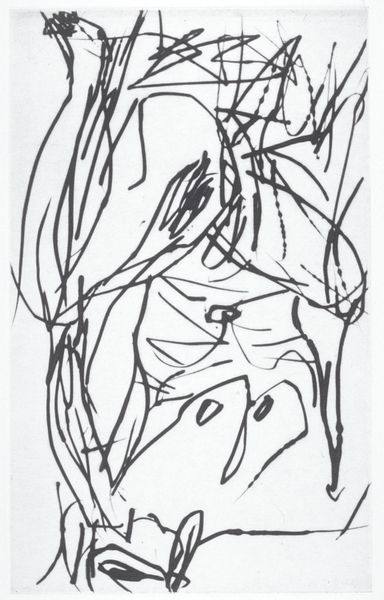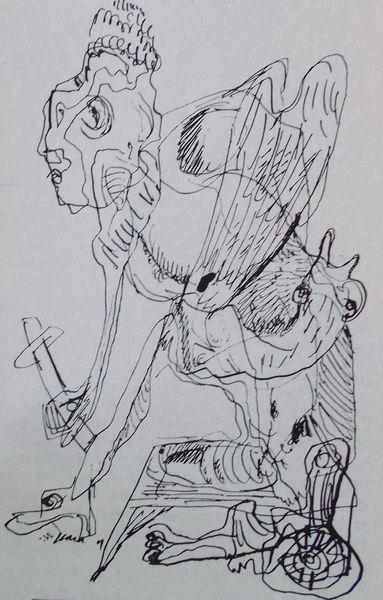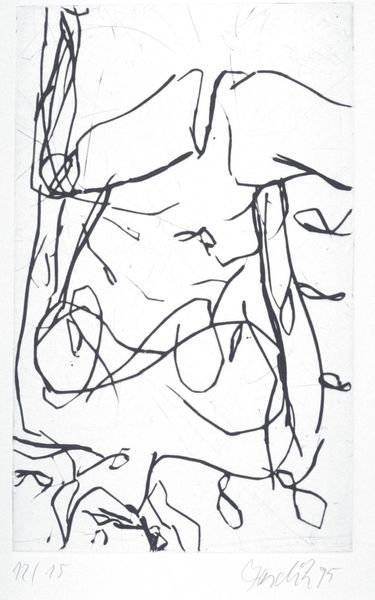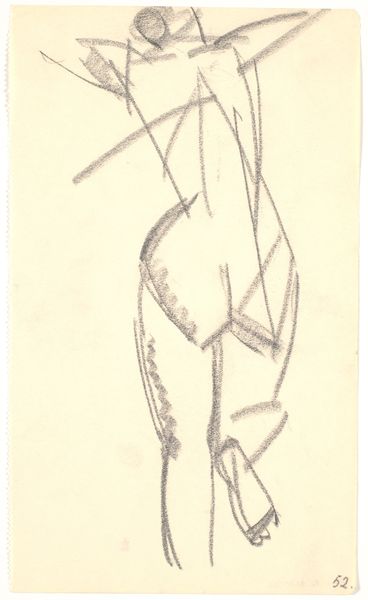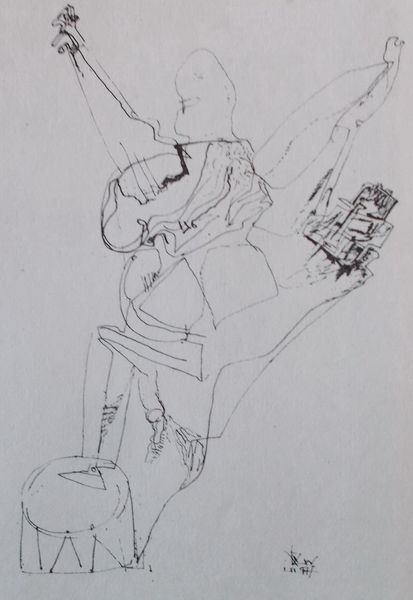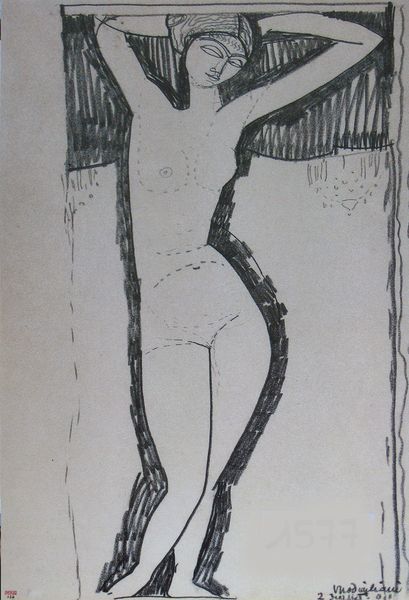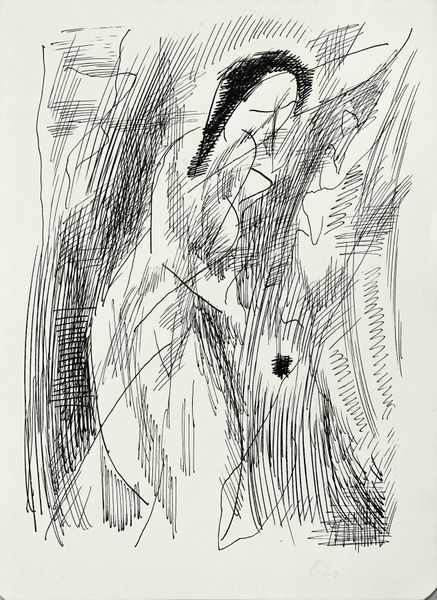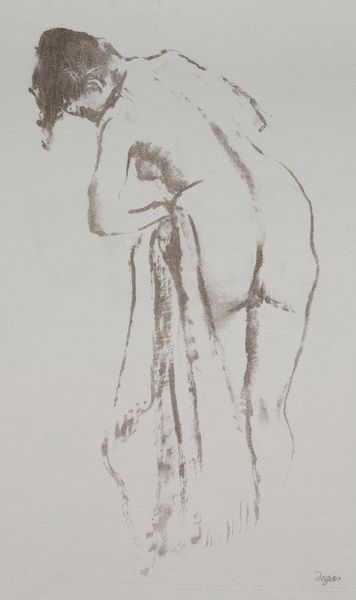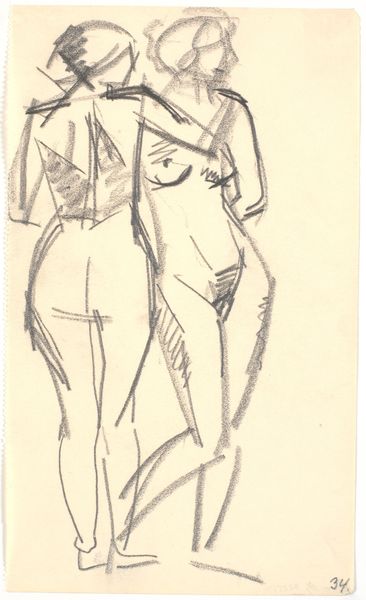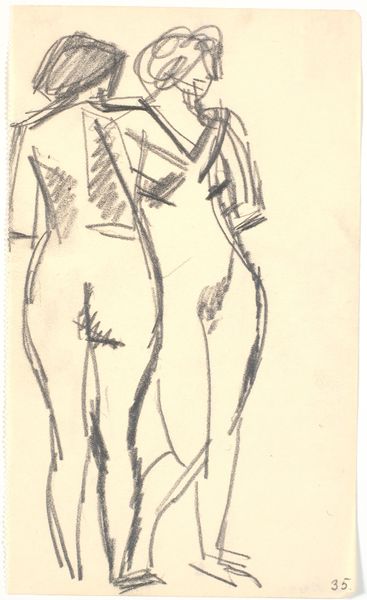
drawing
#
drawing
#
comic strip sketch
#
cartoon sketch
#
personal sketchbook
#
idea generation sketch
#
sketchwork
#
ink drawing experimentation
#
sketch
#
thin linework
#
human
#
sketchbook drawing
#
sketchbook art
#
arm
#
initial sketch
Copyright: Vasile Kazar,Fair Use
Curator: This ink drawing, titled "Illustration for Catul's Poems" by Vasile Kazar, was created in 1969. What's your first take? Editor: A fragile tenderness… It looks like an embrace on the precipice of collapse. There’s a kind of broken romanticism here, a tentative hold against chaos. Curator: Kazar’s illustrative work is fascinating. During this period, many Eastern European artists were using art as subtle commentary on societal constraints. This sketch, meant to accompany poems, uses its style to make its own statement. Editor: The lines themselves feel restricted, almost hesitant. But is that the style speaking, or a coded reaction to social censorship of romantic love and the body itself in 1960s Eastern Europe? The woman’s bare chest... Is that a reclaiming of her personhood through artistic means? Curator: That tension is so palpable, isn’t it? Kazar walked a line; artists often did, referencing classical themes – note the nod to antiquity in the very subject matter – to critique their current context, to push societal boundaries with subtlety. It's worth noting his drawings were widely distributed illustrating books of philosophy and literature, subtly exposing his vision. Editor: Look at how he positions her next to this strange vertical jumble. A pile of wreckage? Discarded ideology? Even the life-affirming floral figure looks precarious. The sensuality becomes complex when considering what women were fighting for globally. Is she in need of liberation, or safe in her love? Curator: Right. And did his role as an artist provide him the cultural standing to advocate? Did his male perspective unintentionally direct his representation? I think that complexity underscores the power of artistic ambiguity within certain political confines. Editor: So, what seems initially a simple sketch ripples outwards, contextualized within a history of artistic suppression and hints at broader questions around women, sexuality, and freedom during this specific period. Curator: Exactly. Kazar provides us with a quiet window into an era, if we approach with mindful perspective. Editor: Absolutely. It really shows how even a small drawing can reveal the echoes of greater historical and social movements.
Comments
No comments
Be the first to comment and join the conversation on the ultimate creative platform.
